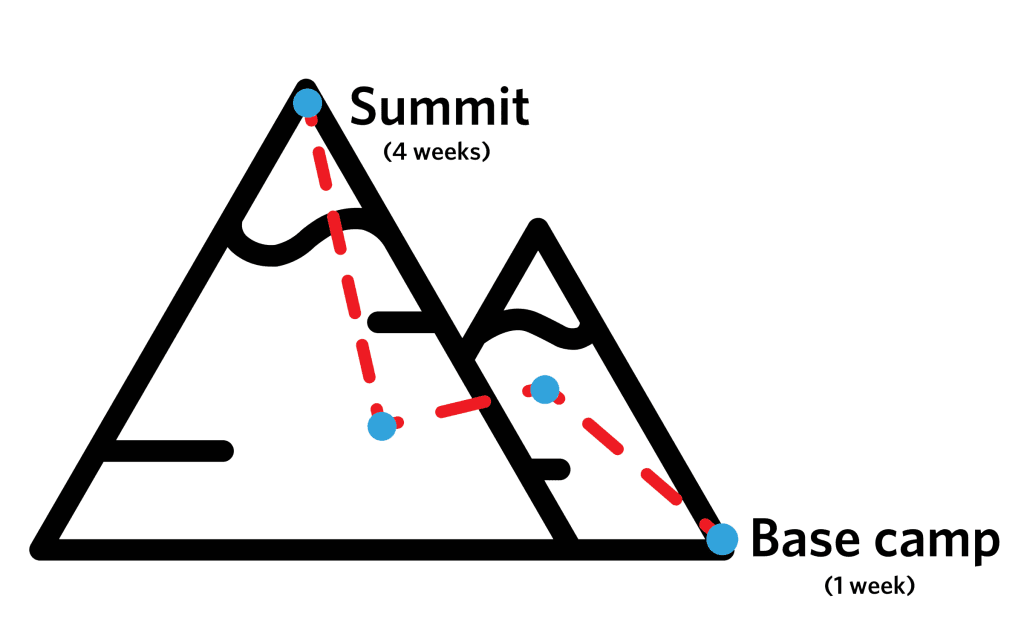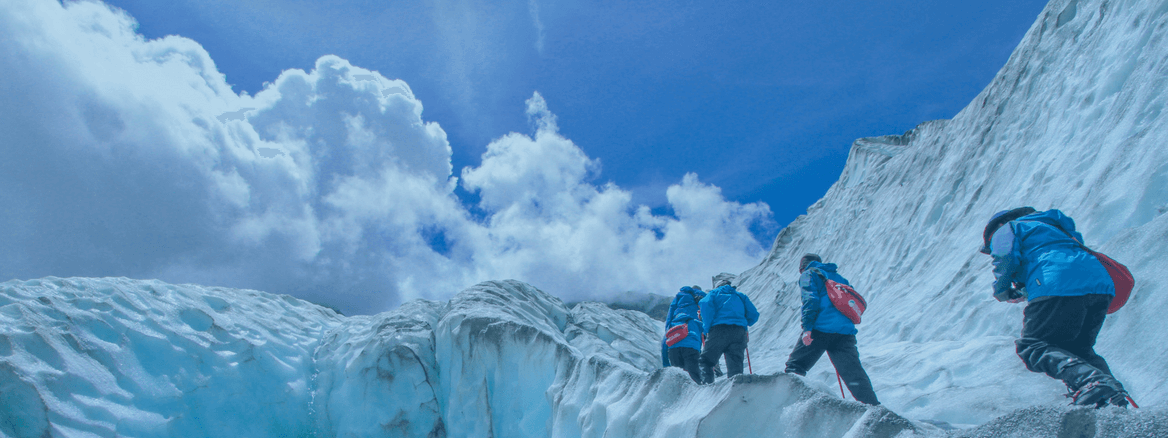Learn how Wistia modeled their product development process after mountain climbers, coordinating team member responsibilities and strengths.
Learn how Wistia modeled their product development process after mountain climbers, coordinating team member responsibilities and strengths.
Maintaining your agility while simultaneously making the product development process predictable is one of the biggest challenges any product leader faces. It was about a year ago that we realized:
- we were failing at this, and
- our laissez-faire, do-what-you-will take on project management was the culprit.
This was hard for us to accept because our lack of rigid project management was exactly what had allowed us to build a great product in the first place. As time went on and both our team and product grew, the project management philosophy that once propelled us ahead had begun to slow us down. Since then, the Wistia senior leadership team and I have been building out and revising what we’re calling the Wistia Operating System — a new methodology for how Wistia gets work done.
What we’ve learned in the process is that maintaining your ability to be nimble and change direction isn’t about removing constraints — it’s about building the right ones.
The Problem: Good Ideas and No Coordination
Before we made the shift to our new operating system, Wistia had a structure that pigeonholed everyone into a particular functional group within the broader organization. This led to three major, company-wide problems:
- Everyone was on their own schedule, so it was difficult to switch someone from their team to something new.
- It was hard to tell what was going on company-wide at any given moment because we didn’t have a unified system for scoping projects. Our marketing team, for instance, could be left unprepared for a product launch because they didn’t know exactly when the product would be ready.
- When company-wide, multi-month projects came up, it took up all of everyone’s time: we didn’t have the agility to chase the smaller opportunities that spontaneously arose.
We decided to tackle these problems by building a new system that allowed people from across the company to coordinate on all kinds of initiatives—from small, creative ideas, to larger feature releases central to our product.
The Solution: Turning Our Company into a Mountain-Climbing Team
We decided to try to build an operating system customized for Wistia, something that captured the creative and spontaneous spirit we try to embody in every aspect of the company. To do this, I got together with the senior leadership team—co-founder and CTO Brendan Schwartz, our COO Kevin Oxendine, Heather Shanahan in finance, and others—to hunt for a _metaphor _that could show the Wistia team exactly how we wanted them tackling their work, both day-to-day and week-to-week. That metaphor was mountain climbing, and the operating system mascot was Ed Viesturs. Viesturs is the only American to have climbed all fourteen of the world’s most legendary mountains, the eight-thousanders. According to him, mountain-climbing is all about coordinating responsibilities and pacing with your team of fellow climbers. “If you want to survive,” he says, “you’ve got to plan and budget and organize.” That’s the ethos we’ve baked into our new operating system. Our operating system organizes our work into two periods: one-week basecamps, and four-week summits. Our base camps focus on unstructured work, giving everyone on the team the time to pursue personal ideas and play around with whatever creative, crazy ideas they have on their minds.

- Team mates can assemble into teams and do a sprint on whatever work excites them, without asking permission from a supervisor.
- People can choose to explore their own ideas, or they can dig into some new opportunity that can come up during the last summit.
Summits are month-long projects where people assemble into teams that work on a single, laser-focused **expedition **together. - **Cross-company expeditions **bring together people from every functional division of the company to work on big products, like major feature or project releases.
- **Small-scale expeditions **don’t include people from every functional division of the company; they’re often formed to support cross-company expeditions, but they’re also sometimes used to execute smaller scale projects—the kind that are still important to our business, but that don’t require people from across all of Wistia.
- During summits, people are always aware of their obligations on any given day: people stay on their expeditions, and aren’t pulled away for every little side project.
We undergird these summits and base camps with tectonic work, a box chart that outlines who is responsible for working with customers on any given day, and how much of their time should be devoted to doing so. This way, no one needs to be feeling like they should be helping customers instead of focusing on their other work.
Structure that Manages Growth
Training all of our employees on a new operating system was jarring, but the Ed Viesturs metaphor helped us through it. As everyone’s gotten adjusted to our base camp / summit method, we’ve been able to better manage the growth of Wistia. Because each project and each team are explicitly defined by discrete, month-long chunks, we’re able to iterate our processes over time to improve how we work together, and to more precisely direct the ways in which the company evolves. After every summit, we sit down together and talk about what worked, and what didn’t. This lets our system correct itself over time: the routine feedback we give each other lets us constantly work on improving our team operations. The operating system is our answer to how we keep our business nimble even as it grows. By working in short, controlled bursts with high-frequency feedback, we can maintain maximum control of how our product evolves over time. Editor’s note: This post is part of our Product Innovator Series that explores what it takes for businesses to survive and thrive in the product-led era. If you’d like us to take on a particular topic under this theme, we’d love to hear from you. Please leave a comment below. Featured photo by Anton Murygin on Unsplash

Chris Savage
CEO and co-founder, Wistia
Chris Savage is the CEO and co-founder of Wistia, a video platform that helps businesses produce, share, and measure video. After graduating from Brown University with a degree in Art-Semiotics, Chris and his co-founder, Brendan Schwartz, started Wistia in Brendan's living room in 2006. Wistia has since grown into a multi-million dollar business with over 90 employees and 300,000 customers.
More from Chris




